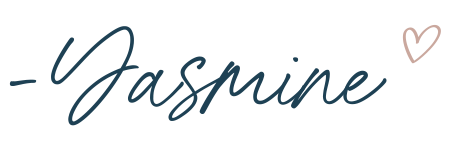Nurse charting is an essential task for every nurse. Keeping everything documented allows your supervising physician to follow the patient throughout their care, as well as for you or your co-workers to see previous notes when you are making a new set.
Nurse charting is not just helpful for the care of patients but also has safety benefits — if charts aren't kept up to date, it can delay the recognition of a patient in severe distress.
Take a few moments to read these epic charting tips for nurses, and you'll be on your way to rocking your nursing charts!
What Is Nurse Charting?

Nurse charting is an essential part of the healthcare process because it provides valuable information to doctors, other nurses, family members, and patients themselves.
Without nurse charting, it would be difficult for patients to receive quality care from their healthcare professionals.
While many people assume that nurse charting is simply about recording vital signs and symptoms, there are actually many more aspects to this critical process.
The goal of nurse charting is to document all aspects of a patient's health status so medical staff can easily access this information later if necessary. This means that every detail about a patient's condition should be included in the nurse's notes, including:
- Past medical history
- Current medications being taken and dosages
- Allergies or sensitivities to medications or foods
- Current lab results (if any)
- Any changes in behavior or physical appearance.
10 Helpful Nurse Charting Tips For Nurses
Nurse charting is a time-consuming process, but it doesn't have to be. If you follow these ten quick tips, you'll be able to gain an edge when it comes to chart quickly and accurately.
#1. Take Quick Notes
When you first enter a patient's room, take quick notes about their condition so that you don’t have to spend time looking through charts later on. This will save time when you need to update charts later in the day.
#2. Use Proper Abbreviations
It can be tempting to shorten phrases or cut corners when charting because you don’t want to spend too much time on each patient; however, this can lead to errors in interpretation by other professionals who read these charts later on down the road.
It’s better to take an extra minute now than have to redo an entire chart later on because it was misinterpreted by someone else!
#3. Be Precise With Your Notation
Don’t use abbreviations unless they are widely accepted throughout the hospital or by nursing staff (like POB for post-op bowel movements).
#4. Keep Your Notes Simple And Concise
Nurse notes should be as simple as possible so that anyone reading them can understand what happened during that shift or visit with a patient without having to ask questions first.
If something seems confusing or hard to understand, then it probably is! Go back over your notes again until they make sense before they are sent out into your EMR system.
#5. Make Sure You Follow HIPAA Policy
The Health Insurance Portability and Accountability Act (HIPAA) is a set of federal regulations that set standards for protecting confidential patient health information.
These guidelines help to ensure that healthcare providers can maintain privacy and confidentiality for their patients.
Nurses must follow these rules when charting. Otherwise, they could be at risk for criminal charges or lawsuits from patients and their families if they violate privacy laws during their employment as a nurse.
#6. Use Legible Handwriting
Handwriting that's too small or hard to read can make it difficult for doctors and other staff members to find specific information quickly.
And if they can't read what you've written, they might not be able to make good decisions about care plans or treatment options until they get more information from you.
#7. Keep Records Accurate and Up-To-Date At All Times
You may not always have time during busy shifts to update every patient's record with every change that happens throughout the day, but try your best!
When an essential piece of information changes — like blood pressure readings after an emergency procedure — add those numbers immediately, so everyone knows exactly where each patient stands.
Tips To Avoid Nursing Charts Error
#1. Use Standardized Charts
It is always better to use standardized charts because they are designed by experts based on research evidence. They are developed with all aspects of patient care, including documentation, in mind.
Standardized charts also help you create an organized system where everything gets documented in an appropriate manner, which enables you to provide better quality care for your patients.
#2. Avoid Careless Charting
The most common mistake that all nurses make is careless charting. Careless charting leads to incomplete or missing data, which might lead to errors in the treatment plans and medication errors too.
So make sure that you double-check every piece of information before you enter it into the computer system or paper-based charting system.
#3. Be Consistent In Your Charting Style
There are many different ways to record information in a nursing chart, so make sure that you are using one format consistently throughout your shift so that other nurses can pick up where you left off without requiring any additional training or instruction.
What Should Nurses Chart?
Nurses typically chart patient vital signs, intake (food) and output (urine), medications, treatments administered, and assessments performed.
Depending on your facility or agency, you may also be expected to document any abnormal findings or changes in a patient’s condition over time.
It’s important to note that not every nurse is expected to do all of these things every shift; however, most nurses will be asked to perform some form of these tasks at least once during their shift.
What Are The Basic Rules of Documentation?
While nursing documentation can seem like a daunting task at first, there are many ways that nurses can improve their charting skills. The most important thing for nurses is ensuring that their documentation is accurate and timely. Here are some basic rules of documentation:
- Identify yourself clearly on each page of the medical record with your name, initials, or both.
- Use the same format throughout your entries so that others can easily follow your workflow.
- Record all pertinent information about the patient, including chief complaint(s), physical exam findings, and diagnostic studies ordered by a physician(s).
- Use abbreviations only when they are commonly accepted in your hospital or facility (for example, TIA = transient ischemic attack; CBC = complete blood count).
Common Charting Mistakes That Nurses Make
When charting, nurses must be aware of what should not be charted. The following are some of the charting mistakes that nurses make:
#1. Not being specific about the time and date
Charts that do not have a specific time and date make it difficult for other medical professionals to determine when a patient was given medication or when procedures were performed. Nurses should use a 24-hour clock format when listing times on charts.
#2. Not including all pertinent information
The nurse's notes should include all the relevant information about the patient's condition and actions taken by medical staff. Nurses should also include any observations or assessments made during the shift in their notes.
If a nurse fails to include all pertinent information in their notes, there may be no record of significant events in a patient's treatment plan or history, which could compromise their health care.
#3. Inaccurate spellings or abbreviations
Nurses must ensure that they spell out words correctly when writing on charts because abbreviations can be misunderstood by other medical personnel who may not know what they mean.
Abbreviations should also be capitalized so that other medical professionals can easily distinguish them from other terms used in charting, such as "pulses" or "ps.”
What Should Nurses Not Chart?
Nurses should not chart information that is not directly related to the patient's medical condition. For example, they should not include their opinion on how the patient is doing or how they think they can be helped.
Nurses should also avoid writing things unrelated to nursing care, such as personal information about family members, political opinions, or jokes.
Charts should only be used for the purpose of communicating information about the patient's health status and treatment plans to other members of the healthcare team.
And That’s A Wrap!
I hope you enjoyed these epic guidelines for better and more effective nurse charting.
Make sure your writing is readable to others. Stay cognizant of what is readily available in your chart.
There are times that you may need to chart notations that are not even with the other charting. Charting should be legible yet concise. Everything written down should be considered part of the medical record.
Charting will not run itself, but with a little effort and attention, it can be efficient and successful.
So till then, happy charting!
See Also: 7 Best Hoka Shoes for Nurses In 2022!
FAQs
How do I get better at nursing documentation?
The best way to get better at nursing documentation is to practice. Try to write down everything that you do in your shift, even if it's just a few words.
The more you write, the better you'll be able to remember what happened during your shift, and it will help the next time you have a shift (or if someone else writes).
It's also important to keep in mind that not all nurses are great at documenting their nursing care, but it doesn't mean they're bad nurses! There are many things other than documentation that nurses need to be good at as well.
Is charting hard in nursing?
No, charts are a systematic way of recording and communicating information about patients' health status. Nurses are trained to fill out charts accurately and efficiently.
Do you chart med errors?
No, the doctor or nurse needs to make an entry into the patient's chart indicating that the error occurred. It's important to note that not all errors are preventable, so this should not be used to punish staff members for honest mistakes.
Can I take classes to learn nurse charting?
Yes, you can take classes to learn nurse charting. There are many medical transcription schools that offer this training. They train nurses to chart properly by using dummies.
You can also find many books on the subject. You can also use online resources like YouTube videos or podcasts to learn this skill.






